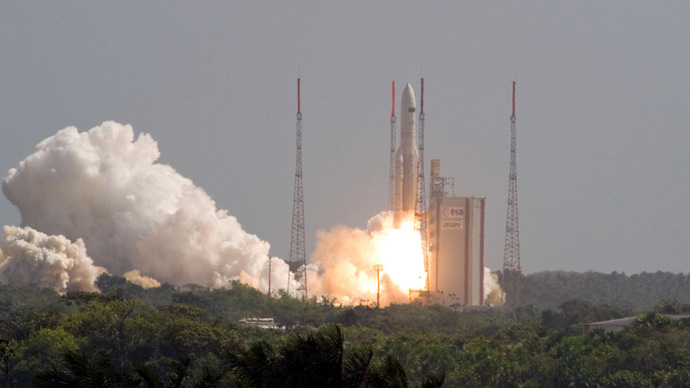
ESA-CNES-Arianespace/Photo Optique Vidéo CSG - S. Martin
Happy First Birthday Herschel and Planck
Feature • May 14, 2010
A year ago today, on 14 May 2009, the Herschel and Planck satellite pair lifted off on an Ariane 5 from Europe’s Spaceport in French Guiana. Now, both spacecraft are busy supplying data to waiting scientists on Earth.
The launch took place at 15:12 CEST. Shortly afterwards, both spacecraft separated according to plan: Herschel at 15:37:55 CEST followed by Planck at 15:40:25 CEST. The first signals from both were received by ESA’s New Norcia and Perth stations in Australia at 15:49 CEST. After a perfect injection by their Ariane 5 launcher, the commissioning of the scientific instruments and subsystems on both spacecraft began about a week later. The spacecraft arrived in their operational orbits in summer 2009. Now their rich flow of data is being analysed by scientists on Earth. First results and images from both spacecraft have already been released and many more will follow.
Herschel reveals the hidden side of star birth
The first scientific results from ESA's Herschel infrared space observatory are revealing previously hidden details of star formation. New images show thousands of distant galaxies furiously building stars and beautiful star-forming clouds draped across the Milky Way. One picture even catches an ‘impossible’ star in the act of formation.
Planck highlights the complexity of star formation
New images from ESA’s Planck space observatory reveal the forces driving star formation and give astronomers a way to understand the complex physics that shape the dust and gas in our Galaxy. Visit the Planck pages for the full story and more astonishing images.







